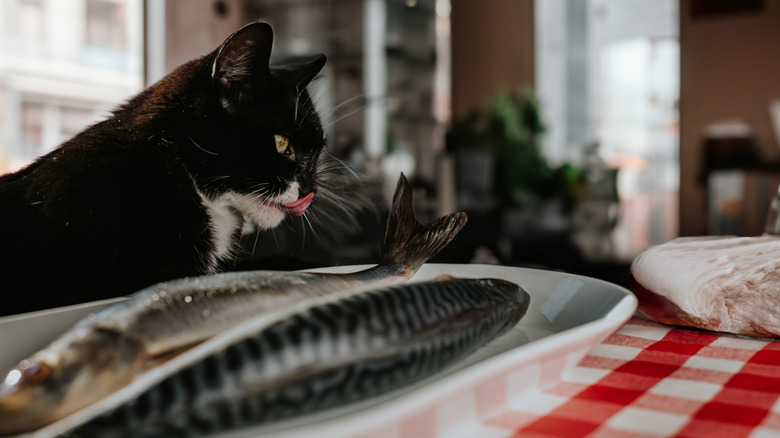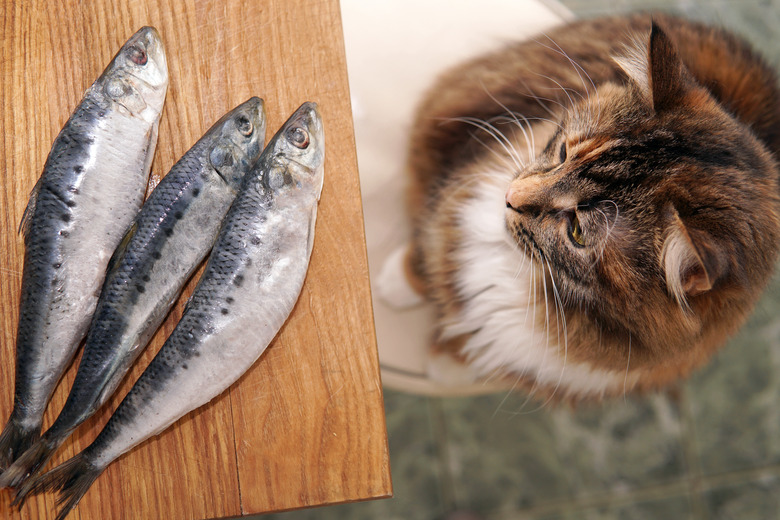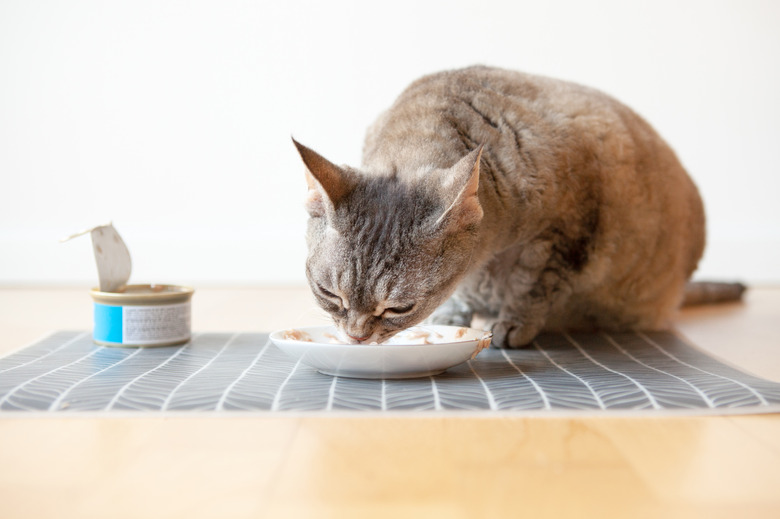Can Cats Eat Raw Fish? How To Cook Fish To Feed A Cat
Many domestic cats love the taste of fish and will readily devour it whether it's raw or cooked. However, repeated consumption of raw fish can cause a vitamin B deficiency, so it's worth the time and effort to cook it first. Even though cats are obligate carnivores, a diet of solely fresh fish can cause health problems. Cat owners should limit how often their cats eat fish to once a week.
Things to know before feeding your cat fish
Fish alone is not a nutritionally balanced food for cats. Even though fish contains elements like omega-3 fatty acids and protein (which contains amino acids), a cat needs more.
- Occasional treat. It can be used as an occasional treat to add variety to their diet. It tends to be easily digested for many cats; however, some cats are allergic to fish, and they can develop gastrointestinal or skin disorders.
- Mercury poisoning. Another concern about different kinds of fish, such as bigeye tuna, orange roughy, king mackerel, shark, and tilefish, is the potential for mercury poisoning. Fish that are at the top of the ocean food chain tend to contain more heavy metals and toxins. Some fish even contain arsenic.
- Contaminants and antibiotics. Factory-farmed fish are also more likely to contain antibiotics and water contaminants.
- Concern over inflammation. Tuna (even cooked or canned) is high in polyunsaturated fatty acids, which can cause vitamin E deficiency. This can result in a condition called steatitis, which is inflammation of the fat. This is more likely to occur in overweight cats. Steatitis is a dangerous condition that requires veterinary attention.
- Too much phosphorous and magnesium. If your cat is already on a commercial cat food or kitten food that contains fish, adding more seafood to their diet can cause them to get too much phosphorus and magnesium. Cats with urinary tract issues and kidney issues may experience a worsening of their health problems.
Is it safe to feed your cat raw fish?
No, you should cook fish before feeding it to your cat for a variety of reasons. Just because your feline is eager to consume raw meat doesn't mean they should. Cooking makes it easier to remove bones that can injure your cat. And though bones are a source of calcium, kitties on a commercial cat food don't need to be supplemented with it. Although undomesticated cats eat raw food, fish is rarely a part of their diet. This means that taking the extra time and effort to prepare cooked, filleted fish is essential to your cat's health. Cooking also kills off any salmonella bacteria.
Some types of fish contain thiaminase, an enzyme that breaks thiamine molecules in half and renders the B vitamin useless in the body. Feeding raw fish can produce a vitamin B deficiency. Thiamine is essential to energy metabolism, and if your cat develops thiamine deficiency, they could end up with fatigue, weight loss, and serious health issues affecting the heart and nervous system. If your pet is already on a fish-based cat food, talk with your veterinarian before adding your catch to your cat's diet.
Popular types of fish that contain dangerous levels of thiaminase when raw include:
- Yellowfin and skipjack tuna
- Mackerel
- Atlantic and Baltic herring
- White bass
- Smelt
- Snapper
- Sardines
- Anchovies
- Whitefish
How to cook whitefish, white bass, and tuna for cats
When cooking fish for cats, don't fry it or coat it in oil. Added fats can cause intestinal upset to your cat. Instead, bake the fish and carefully remove all bones before serving it. Fish bones are a choking hazard.
To bake the fish, wrap the fish in parchment paper and then in a layer of aluminum foil to hold in the moisture. Do not add any seasonings, as these can upset your cat's stomach, and the taste of fish is what your kitty craves. Bake at 400 degrees for 10 to 12 minutes or until tender. Let it cool and then flake it into your cat's bowl.
How to cook salmon for cats
Don't add any seasonings. Atlantic salmon is also thiaminase-free. When cooking salmon for cats, you can bake it in parchment paper and foil just like whitefish. However, thicker salmon steaks will need more cooking time — about 15 to 17 minutes, or approximately eight minutes per side. Flesh should be opaque pink with white lines when done.
You can also poach salmon in a nonstick pan with 1 or 2 tablespoons of water or sodium-free broth to keep it from sticking. Three to four minutes per side on medium heat usually does the trick. However, if cooking a smaller piece from the tail end, you might need to reduce the time to two to three minutes on each side. Don't forget to remove all the fish bones.
The bottom line
Though it's tempting to give cats human foods, healthy cats on a high-quality, well-balanced diet should limit their intake of fish to once a week. Repeatedly feeding cats raw fish can adversely affect their health by depleting them of B vitamins. Eating fish can also cause digestive tract and skin issues for some cats with food allergies. If your pet is already on a commercial cat food that contains fish, talk with your veterinarian before adding any seafood to your cat's diet.


